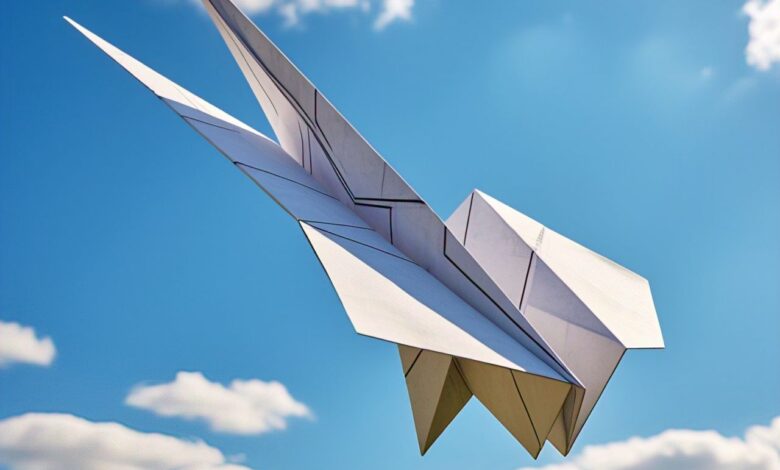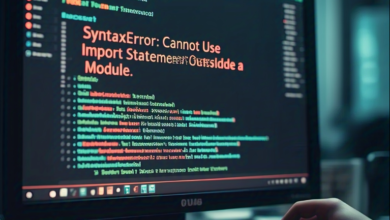How to Create the Best Paper Airplane: A Simple Guide for Everyone

If you’re looking for the best paper airplane, you’ve come to the right place! Crafting a perfect paper airplane isn’t just about folding paper — it’s about finding the right design that suits your goal, whether it’s distance, speed, or just plain fun. The best paper airplane should be easy to fold and should fly smoothly, soaring through the air like a pro.
In this post, we’ll show you how to make the best paper airplane, from the simplest designs to more advanced ones. Whether you’re teaching kids or trying to break your personal flying record, we’ve got you covered with step-by-step guides that anyone can follow. Ready to get started? Let’s fold and fly!
What Makes the Best Paper Airplane? A Simple Guide for Beginners
Creating the best paper airplane starts with understanding the basic rules of folding. The main goal is to make sure the folds are neat and symmetrical, which will help the plane fly smoothly. Whether you’re just starting out or teaching a young one how to fold, the best paper airplane is one that can fly straight and glide easily.
A simple design, like the classic dart shape, is a great place to begin. These planes are easy to make, don’t require many folds, and fly well even if the folds are not perfect. The key to success is learning to fold precisely and patiently. Remember, you don’t have to rush the process — folding carefully is the first step to creating the best paper airplane.
Once you’ve got the basic design down, you can start experimenting with adjustments. The best paper airplane will stay straight and glide longer when you fold the wings properly and make slight tweaks to the nose. Don’t forget, small changes can have a big impact on the flight, so don’t be afraid to test different styles and see which one works best for you.
The Best Paper Airplane for Distance: Fly Far and Wide
When you’re aiming for distance, the design of your paper airplane plays a big role. The best paper airplane for distance should be lightweight yet stable enough to fly a long way. One popular design for this purpose is the “Bird,” which is easy to fold and can glide a long distance when thrown correctly.
To get the best performance, it’s important to throw your paper airplane at a 45-degree angle. This angle helps the plane catch the air and glide further. Also, remember that the power of your throw is important — but be careful not to throw too hard. If the plane goes off track, you can adjust the wings slightly to help it fly straight.
- Use the right paper size: Standard A4 paper works best for long-distance planes.
- Throw with precision: A firm, controlled throw gives your plane the best chance to soar.
- Adjust the wings for smooth flight: Small tweaks can help keep the plane on track.
Top Tips to Create the Best Paper Airplane for Speed
For those who want to race their paper airplanes, speed is the main goal. The best paper airplane for speed has a sleek design that cuts through the air quickly. A good example is the “Sonic Jet” — a design that is streamlined and fast. To achieve top speeds, the plane needs to be lightweight and have sharp folds that prevent drag.
A fast paper airplane needs to be thrown with a lot of force. It’s important to throw it slightly upwards, so it can catch the air and zoom ahead. The faster you throw it, the faster it will go. However, if the wings are too wide or the plane is too heavy, it could slow down.
- Go for sharp, clean folds: These help reduce drag and increase speed.
- Use thicker paper for stability: It can help the plane hold its shape at higher speeds.
- Throw with force and accuracy: Speed depends on the power and precision of your throw.
The Easiest Paper Airplane to Make: A Perfect Start for Kids
When it comes to introducing kids to the world of paper airplanes, the best paper airplane is one that’s simple to fold. The “Basic Dart” is a great beginner design because it only takes a few folds to complete. This design is perfect for younger kids who are still learning how to fold paper neatly.
Making the Basic Dart involves simple folds that almost anyone can do, and it flies well even if the folds aren’t perfectly symmetrical. With just a few easy steps, you can have a plane that glides through the air with ease. The key is showing kids how to line up the folds correctly and press down gently to create crisp edges.
- Only 5 easy folds: The Basic Dart is the easiest to make, perfect for kids.
- Fun and quick: It’s great for short, quick flights that keep kids engaged.
- Great for learning: Helps kids develop fine motor skills as they practice folding.
Best Paper Airplane Designs: From Beginner to Expert
If you’re looking to improve your paper airplane skills, it’s a good idea to try different designs. The best paper airplane designs range from simple planes for beginners to more complex ones for experts. Whether you’re trying to break a distance record or just want to impress your friends with cool tricks, experimenting with new designs is fun.
For beginners, the Bulldog Dart is an easy choice. It’s simple and flies decently well. As you get better, you might try the Harrier, which has more folds and is better for longer flights. Expert-level designs, like the Hammer, are more complex but can offer impressive results once you get the hang of folding and throwing.
- Start simple with the Bulldog Dart: A good plane for beginners.
- Move to the Harrier: More folds and a better flying experience for intermediates.
- Master the Hammer: A complex design that delivers great results.
Best Paper Airplane for Decoration: Make Your Plane Look Amazing
Sometimes, the best paper airplane isn’t just about how well it flies but how it looks. If you’re interested in making a paper airplane that looks cool and unique, try focusing on decoration. The White Dove and Eagle Eye are great examples of beautiful designs that resemble real birds. If you prefer a more traditional plane look, the Navy Plane is another great option.
You can customize your paper airplane with different colors, patterns, and even small accessories. Not only does this make your plane stand out, but it can also make the flying experience more fun. It’s all about creativity and adding your personal touch to each design.
- Try the White Dove or Eagle Eye: Beautiful designs that look like birds.
- Customize your plane: Add colors, patterns, or stickers to make it unique.
- Enjoy the art of paper planes: Making and decorating planes can be just as fun as flying them!
With these tips, you can create the best paper airplane for any situation. Whether you’re going for distance, speed, or just having fun, there’s a paper airplane design for everyone.
Best Paper Airplane for Windy Days: Flying Against the Breeze
On windy days, the best paper airplane is one that can handle the gusts without crashing too soon. The “Lift Off” paper airplane is a great choice when it comes to flying in windy conditions. This design is made to be durable and can withstand the air pressure, allowing it to fly longer distances even when the wind is pushing against it.
To get the best performance, aim to throw the plane with the wind behind you, using a slight upward angle. This will help your plane catch the breeze and glide smoothly through the air. You can also make small adjustments to the wings if the wind is too strong, ensuring your plane stays on track.
- Durable design: Withstands wind without losing stability.
- Throw with the wind: Helps your plane go farther by catching the breeze.
- Adjustable wings: Tweak them to keep the plane flying straight.
Conclusion
In conclusion, the best paper airplane depends on what you want to achieve! Whether you’re looking to fly the farthest, do tricks, or just have fun indoors, there’s a perfect design for every goal. Experiment with different designs, and soon you’ll know which paper airplane works best for you!
Keep practicing and adjusting your planes to improve your flying skills. The more you try different folds and throwing techniques, the better your paper airplane flights will become. Have fun and let your creativity take flight!
FAQs
Q: What is the best paper airplane for beginners?
A: The “Basic Dart” is the easiest and best for beginners. It’s simple to fold and flies well with just a small throw.
Q: How can I make my paper airplane fly longer?
A: Throw your plane gently at a slight upward angle, and try adjusting the wings to make them flatter for a longer glide.
Q: Can I use any kind of paper to make airplanes?
A: Yes, regular printer paper works great, but you can also use colorful paper for a fun look!
Q: What’s the best paper airplane for tricks?
A: The “Light Spinner” is the best for tricks. It spins through the air and does cool corkscrew moves.
Q: How do I make my airplane fly straight?
A: Make sure your wings are even, and if the plane starts to veer off, gently bend the back of the wings for a straighter flight.





